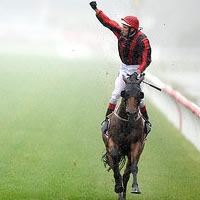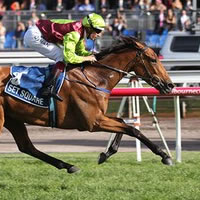
What’s changed in Racehorse Syndication since ATB got involved
by Darren Dance.
I was recently asked what’s changed in syndications since I first got involved.
Let’s start when ATB was formed in 1997 and in that time there was only about 7 or 8 registered syndicators in Victoria.
Winding the clock forward some 17 or 18 years later there is now over 40 registered syndicators in Victoria plus most trainers are syndicating to existing clients as well.
When I first got involved in 1997 there was only 6 registered owners in each horse as a maximum.
So when you picked up a racebook there was only between one and six owners registered in every horse.
Today, of course, there are 20 registered owners, and within those 20 there’s many syndicates involved in each horse.
So the business of syndication has certainly grown, and I think it’s one thing that’s very important to racing Australia wide because it allows people to get involved in racing thoroughbreds.
Back in the eighties it was less affordable because you would have to have minimum 16% share, and therefore the costs of the bloodstock back before the big crash was extremely high, and the monthly ongoing costs were also high to take a horse outright, or a large share in a horse.
I think these days you will find there is a lot more participation and a lot more people involved in racing and you only have to look at the mounting yard to see that, so there is a lot more people to service.
In today’s world with you tube technology, email and voice audio to texts using Iphones, etc, it has made it a lot easier to communicate with more people.
When I started we would be sending out letters to clients first off keep them updated on their horse, obviously we would get an update off the trainer and then we would send a letter out.
The client probably get the update at the end of that week whereas now the horse can trial at 9am in the morning and they can have a message sent out within one minute after the trial, and certainly see the vision of the trial the same day.
Technology has been a major player and I think society in Australia have adapted with technology.
Owners have become tech savvy and impatient for information, wanting to know exactly how our horse went at trial straight away, and don’t want to wait on an overnight update or a next day update.
Certainly the timeliness of communication is now required to be almost instantaneous in real time.
Given the amount of competition in the market, servicing owners and client’s is very important to maintain.
I think the other thing that has changed a lot generally in racing is that we have seen the emergence of Super VOBIS and VOBIS Gold in Victoria which has meant that the returns to owners are far greater than what they were 20 years ago.
So even though the costs of training has gone up, I don’t think the cost of the overall horses has gone up as much.
There’s a lot more horses being bred, even though that has dropped off recently.
You can still buy a nice horse for around the $30,000 to $50,000 mark, and having twenty owners involved brings the cost down to about $2,500 per share, which is quite affordable for twenty owners to get involved.
Then of course you have the costs for 5% share which costs around $125 to $150 per month on average.
I think racing is very affordable in the current market and the returns on prizemoney to owners, particularly with Super VOBIS and VOBUS Gold, put it in reach of just about anybody to own a share in a racehorse, unlike when I first got involved.
Article written by Darren Dance (Owner/Director of Australian Thoroughbred Bloodstock)


